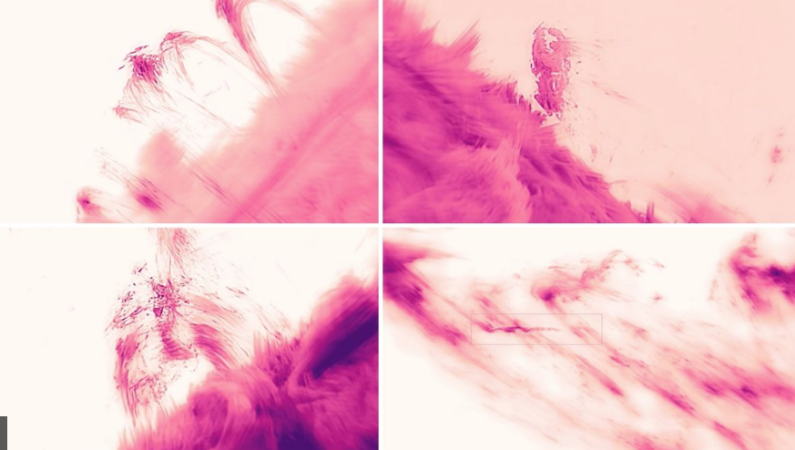The sun’s outer atmosphere, known as the corona, has long fascinated scientists due to its extremely high temperatures, explosive activity, and dramatic prominences—massive plasma filaments stretching from the solar surface. Typically only visible during total solar eclipses and blurred by Earth’s turbulent atmosphere, the corona has remained difficult to study—until now.
Thanks to a cutting-edge adaptive optics system called Cona, installed on the 1.6-meter Goode Solar Telescope (GST) operated by NJIT’s Center for Solar-Terrestrial Research at Big Bear Solar Observatory in California, scientists can now observe the sun in unprecedented detail. These images, captured in hydrogen-alpha light and artificially colorized for clarity (where darker colors represent brighter light), reveal the sharpest views ever recorded of the corona, including phenomena such as coronal rain and an entirely new plasma feature.
One of the most compelling images shows the clearest view yet of coronal rain—fine strands of cooled plasma, some thinner than 12 miles (20 kilometers), falling along magnetic field lines. Unlike rain on Earth, this plasma does not fall straight down but follows the curved paths of the sun’s magnetic field due to its electric charge, forming arching cascades as it returns to the solar surface.
Another groundbreaking discovery is a previously unseen structure: a plasmoid—a finely detailed plasma stream that rapidly forms and collapses. This feature snakes across the solar surface at speeds nearing 62 miles (100 kilometers) per second, and is likely the first such structure ever captured on camera. “These are by far the most detailed observations of this kind,” said study co-author Vasyl Yurchyshyn, noting that the nature of these features is still not fully understood.
Also visible in the new footage is a solar prominence—a massive looping formation of plasma twisting and moving along magnetic field lines. These prominences, which originate from the photosphere (the sun’s lowest visible layer) and extend into the corona, are still poorly understood in terms of how they initially form. The apparent "fluffy" look of the sun’s surface comes from dynamic plasma jets known as spicules, which are also the subject of ongoing research.
These high-resolution views of the corona offer more than just striking visuals—they allow researchers to study the sun's outer atmosphere with greater precision than ever before. “The new coronal adaptive optics system closes this decades-old gap and delivers images of coronal features at 63 kilometers resolution—the theoretical limit of the Goode Solar Telescope,” said Thomas Rimmele, Chief Technologist at the National Solar Observatory.
By resolving the fine-scale structures and dynamics of cooler plasma, these observations bring scientists closer to solving one of solar physics’ biggest puzzles: why the corona is millions of degrees hotter than the solar surface. The improved imaging also enhances understanding of filament eruptions and coronal mass ejections (CMEs)—massive solar explosions that influence space weather and can disrupt satellites, technology, and communications on Earth while generating vivid auroras.
Looking ahead, researchers plan to use this adaptive optics technology on even larger instruments, including the 4-meter Daniel K. Inouye Solar Telescope in Hawaiʻi, offering an even closer look at the sun's outer layers. “This marks the start of a new era in solar astronomy,” said co-author Philip Goode, “promising many more discoveries in the years and decades to come.”
The study was published on May 27 in the journal Nature.

